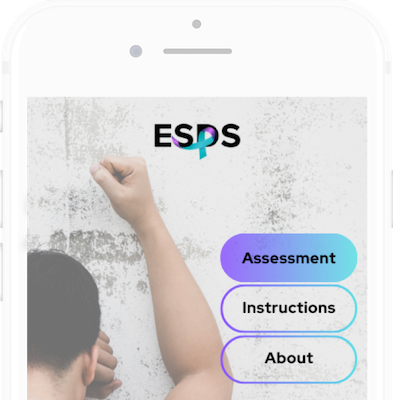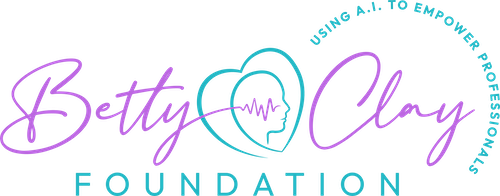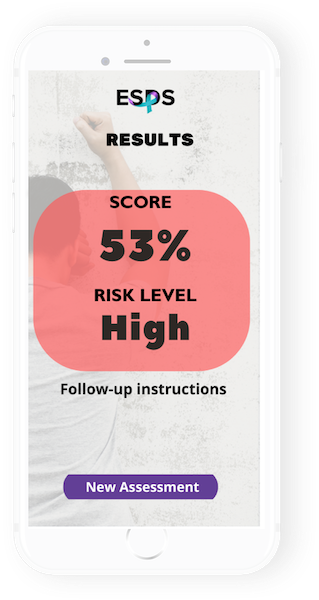Featured
App
Betty Clay Foundation (BCF) features ESDS, 3-Steps to Early Suicide Detection System an AI Application for professionals, clinicians, and educators. ESDS made for desktop and mobile devices; it offers healthcare providers and other stakeholders strategies to potentially reduce the prevalence of suicide attempts.
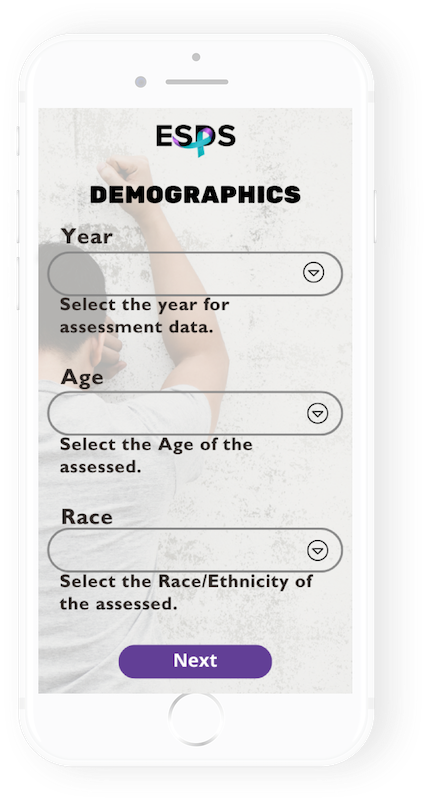
ESDS Step 1
Year, Age, & Race
Get started by selecting the demographics for the assessed and click next.
YEAR – Each year is a separate analysis of risk factors that contribute to suicidal ideation, for those aged 12-18 years old. For example, the risk factors which contributed to suicidal ideation in 1991, are different from those in 2009 (and pre/post COVID-19).
AGE – This option is for follow-up purposes only and does not affect the statistical scoring.
RACE/ETHNICITY – This option is for follow-up purposes only and does not affect the statistical scoring.
ESDS Step 2
TOPICS TO DISCUSS
Check exactly three topics you wished to discussed with the assessed and click continue.
Some topics are easier to discuss than others (i.e., assessing a patient on whether they experience difficulty concentrating and remembering things is more inviting for both parties than exploring questions around sexual identity). Questions about how many hours the adolescent sleeps a night could act as a segue into more deep and direct questions and answers. This is important because adequate sleep of 8-10 hours per night may decrease suicidal ideation by 80% (Whitmore et al., 2019).
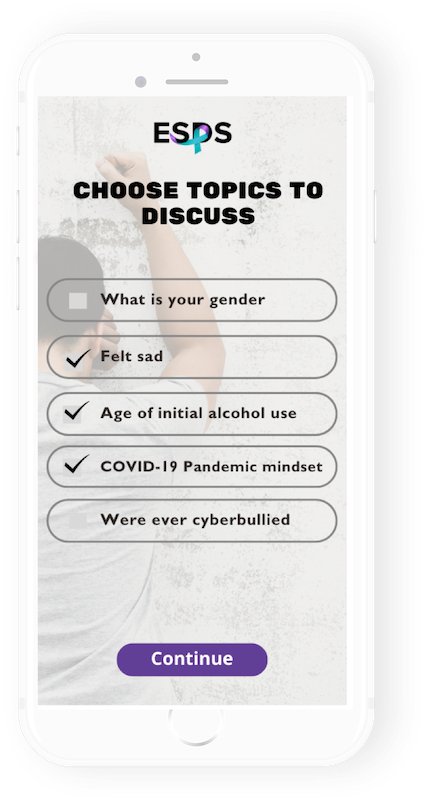
Results
Evidence-based results quickly appear. ESDS results are based on statistical scoring features from multiple-layered algorithms. The results uses: decision support for new patient encounters; trigger follow-up procedures (such as a PRIME-MD or a PHQ-9 assessment); or referral to psychiatry.
FOLLOW UP PROCEDURES
ESDS offers customizable follow up procedures because mental institutions vary in their decision support processes. Contact us for more information.
LEARNING TOOLS
ESDS for medial schools and other mental health learning programs. ESDS is a hands-on and practical application to potentially increase the user’s comfort levels when assessing early suicide risk. ESDS augments learning byway of ITERATIVE Assessments (gamification).
What You Get
Evidence-Based Research
An exploratory public health study investigated the most important behavioral risk factors associated with suicidal ideation over a 30-year time period, then applying multiple algorithms for statistical power.
Gamification Design
Gaming attributes outside the context of a game influences learning (Landers, 2014; Johnson et al., 2016). Gamification is rapidly becoming a trend in health profession education; it has increased almost tenfold in 2015 (Gaalen et al., 2021).
Comfort Encounters
More knowledge, skill, and comfort with suicidal risk factors and ready access to appropriate resources, it is likely the prevalence of adolescent suicides will decrease (Smith, n.d.; DeCamp et al., 2021)
Learning Programs
Learn more about ESDS in the classroom for mental health professionals. Contact us for more information.
Decision Support System
ESDS provides evidence-based recommendations, guidelines, and alerts, empowering stakeholders to make well-informed decisions and deliver high-quality care to those most at risk for considering suicide.
Global Versions
ESDS worldwide coming soon.
Get Started!
Our Technology is based upon health informatics, data science/statistics, management information systems, and software engineering. Join us in empowering those who empower others.
